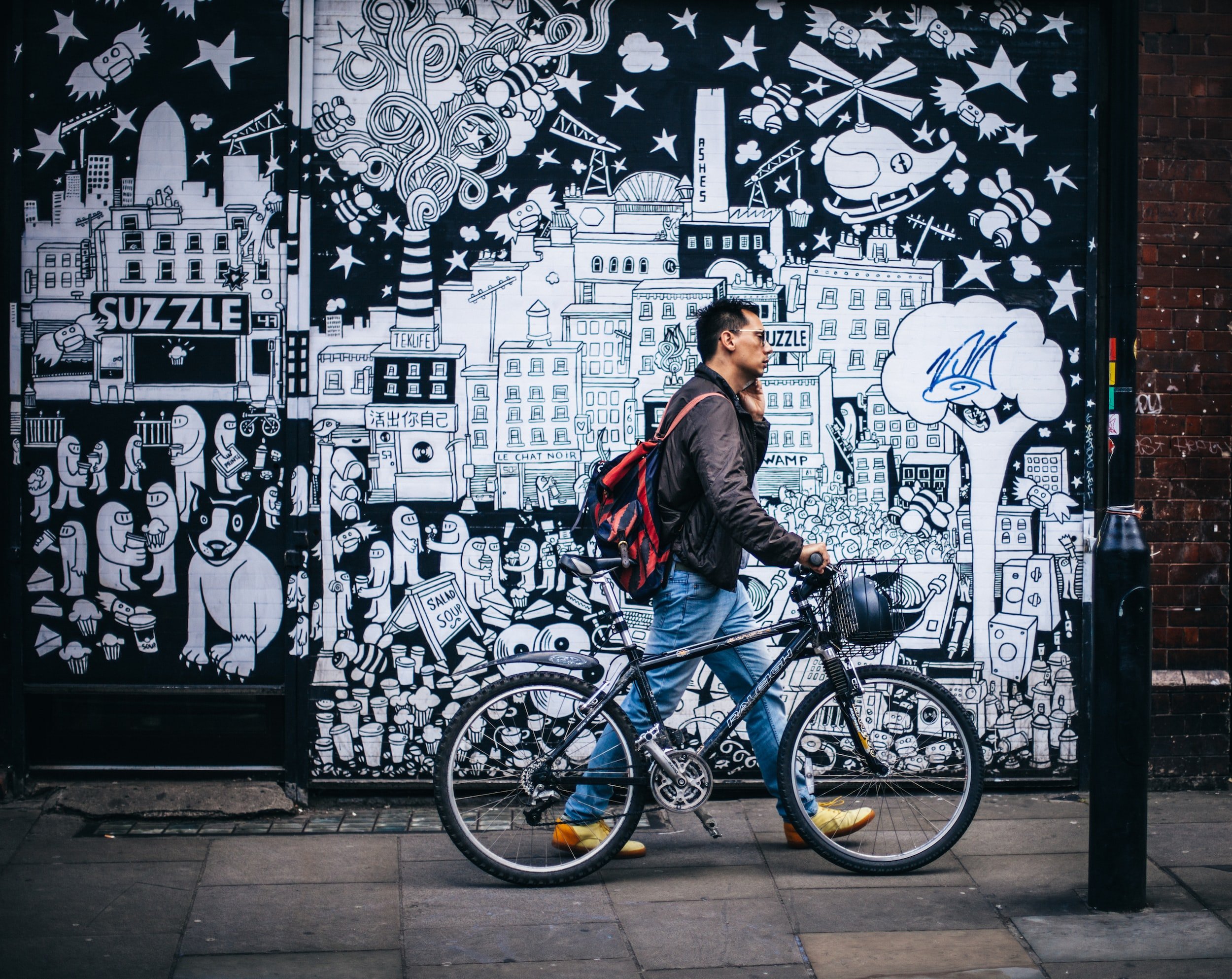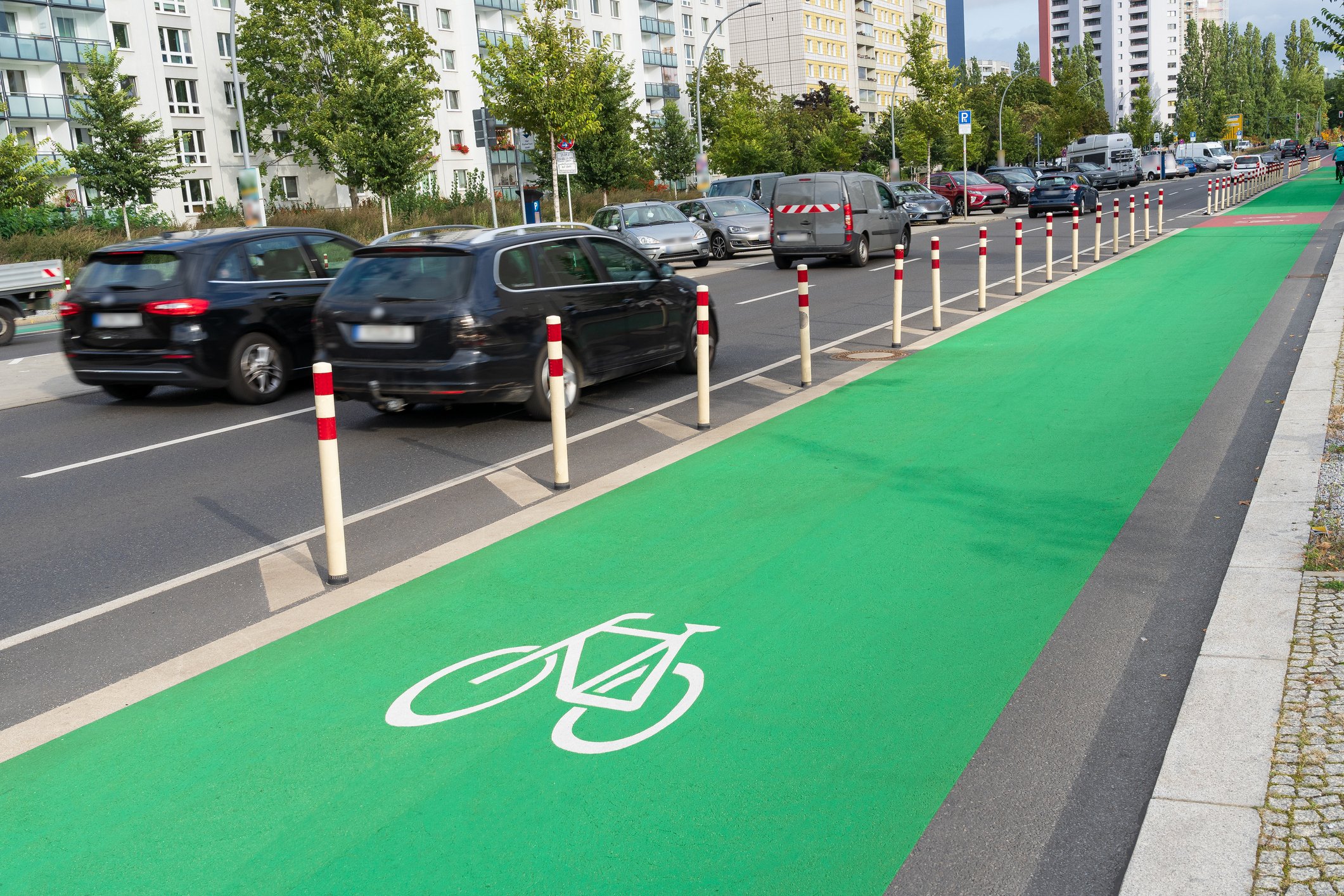What Bike Lanes Taught Me About Racism
Photo by Clem Onojeghuo on Unsplash
Have you ever thought about purchasing a bike?—maybe to save money on your daily commute or to lessen your carbon footprint—only to change your mind last minute because you thought you’d be too scared to ride in traffic?
You may be on to something. American roads are becoming even more dangerous, according to Smart Growth America—especially for bicyclists and pedestrians. However, that wasn’t always the case. Cyclist and pedestrian deaths declined between the 1970s and 2000s but after reaching a low point in 2009, they began trending upwards again.
In 2020, the advocacy group tracked a total of 6,500 pedestrian deaths, or nearly 18 per day—a 4.5% increase from 2019. Native Americans and African Americans, who are most at-risk of being struck and killed, were overrepresented on the list. Nine hundred and thirty two cyclist deaths were also recorded in 2020.
With America’s streets so undeniably dangerous for bicyclists and pedestrians, the resistance to bike lanes in urban areas can feel confusing and counter-intuitive. Why are certain communities so opposed to their construction?
The answer is complicated. Bike lanes have long been associated with gentrification, or the displacement of low or middle income communities–often Black and Brown–by the arrival of wealthier people – often white professionals and their families. Across the country, bike lanes have become a political flashpoint, leading to protests and push-back from local communities who are already feeling the pressure of higher rents and property taxes.
Are bike lanes to blame for the gentrification?
Bike lanes don’t directly cause gentrification but they are a symptom of it. They are also a symbol of so-called “urban-renewal”, in the same way that white people jogging, luxury condominiums, whitewashed yoga studios, e-bikes and artisanal coffee shops are also symbols of it.
Won’t bike lanes improve safety for low-income neighborhoods of Color?
Bike lanes won’t fix the bigger problem of Black and Native American pedestrians dying at higher rates on U.S. streets. That’s because of a couple factors. Low income Black and Brown communities are “less likely to have access to parks and other opportunities for safe recreational walking, are less likely to have sidewalks, marked crosswalks and street design to support safer, slower speeds” according to Smart Growth America.
Think of the automated speed cameras or photo radar that is more common in wealthier, white neighborhoods; think of the speed humps which are more common in wealthier white neighborhoods; think of the push-button Accessible Pedestrian Signals which are more common in wealthier, white neighborhood—the raised crosswalks, narrower lanes, road diversion, roundabouts, crosswalk beacons and medians—all deliberate design choices that are somehow made more frequently in wealthier, whiter neighborhoods. Imagine that.
So no, bike lanes won’t fix the problem which is this: Black and Brown lower-income communities are “dangerous by design”, according to Smart Growth America. There aren’t enough crosswalks or sidewalks; the wide streets and major thoroughfares are designed for high-speed, high volume vehicle traffic; and there are few places for pedestrians to safely cross. The intersections are unsafe. There are few, if any, “traffic calming” tools employed to make Black and Brown lower-income neighborhoods safe for pedestrians—especially older or disabled pedestrians.
How often have you driven through a lower-income community and witnessed a mother crossing a major street—cars speeding past dangerously—with young children in tow? How often have you shaken your head in disbelief? How often have you driven past small crosses and teddy bears at poorly designed intersections in lower-income communities?
No, it wasn’t always this way but it has been ever since the U.S. government used eminent domain to seize homes in historic Black and Brown neighborhoods and bulldoze them in order to carelessly construct dangerous highways and roads that white city residents fought tooth and nail to keep out of their own communities.
Bike lanes won’t necessarily make Black and Brown neighborhoods safer for pedestrians. Bike lanes where? And for who? Black and Brown cyclists do exist but, only 0.60% of Americans bike to work. And they seem to mostly belong to a privileged class of Americans. Yes, racism impacts cycling as well.
Also, while bike lanes make sense in lower-income neighborhoods to provide safer access to public transportation hubs, that’s not necessarily where they end up. In 2011, Dr. Samuel Stein, then a master’s candidate in the urban planning program at the City University of New York, wrote that bike lanes are being constructed to support gentrification and recruit capital investment leading to what he labeled as “cycling segregation.” Urban theorist Richard Florida also points out that a double standard exists: cycling is positively associated with “the creative class” and negatively associated with the working class.
By the time a bike lane does appear, it might just be too late for residents who are rightfully fearful of being pushed out of their own neighborhood by the skyrocketing cost of living—not mention the white professionals and their families who are oblivious to their impact. It’s no surprise that “hostility to cyclists and bike lanes often seems to be a proxy for wider anger at gentrification,” says journalist Peter Geoghegan.
Getty Images
A sense of alienation
So why are some People of Color (low-income white folks too!) so angry about bike lanes? If you’ve read this far, you know, it’s not the bike lane itself—it’s what it represents—privilege. Bike lanes often herald the destruction of Black and Brown communities and the displacement of working class families. The bigger question is why some white cyclists are oblivious to this.
It’s also the fact that Black and Brown residents have long asked city officials for improvements to their own neighborhoods—crosswalks, improved intersections—that would make them safer for pedestrians, for children, for older adults. And often, city officials did nothing. It’s no wonder that working class communities are fed up with the double standard. Bike lanes continue to reinforce the fact that low and middle income Black and Brown residents (and low income white families) are second class citizens in their own neighborhoods.
In 2011, Stein argued that “bicycle planning in New York City currently reflects and amplifies city-wide transportation injustices” and that “a retooling of the program around the needs of working-class cyclists, however, could produce dramatically different results.” It’s unsurprising that working class neighborhoods—disproportionately Black and Brown, but not always—reject the symbol of gentrification, racism, and class bias–when their long-term needs have not been addressed.
What about our safety?
If only white cyclists would put the same effort into advocating for safer streets in lower-income neighborhoods. “Black pedestrians are twice as likely to be struck and killed while walking than white pedestrians, while Native people are more than three times as likely to be fatally hit,” according to Smart Growth America. Where is their outrage? Where is their concern? If only they would mobilize alongside Black and Brown activists in alarm. This is also a transportation injustice–even if it doesn’t affect them in their gentrifying neighborhoods where they bike to Whole Foods, to work and to pick up their child from daycare in protected bike lanes.
What if white gentrifiers mobilized around pedestrian safety measures for low income neighborhoods of Color city-wide? That would be a different conversation. “Pedestrian deaths have increased 59 percent since reaching their low point in 2009 and account for 17 percent of crash fatalities,” according to the Insurance Institute for Highway Safety Highway Loss Data Institute. “Two percent of people killed in motor vehicle crashes are bicyclists.” There is so much focus on the two percent. Sometimes, we forget about the 17 percent, and the Black and Native pedestrians who are most at risk of being killed by a motor vehicle.




















Becoming a mountain biker meant occupying a one-size-fits-all identity. It was difficult. If you are brown or different in any way from the white, male, able bodied athletes promoted by major brands, your task is to assimilate.